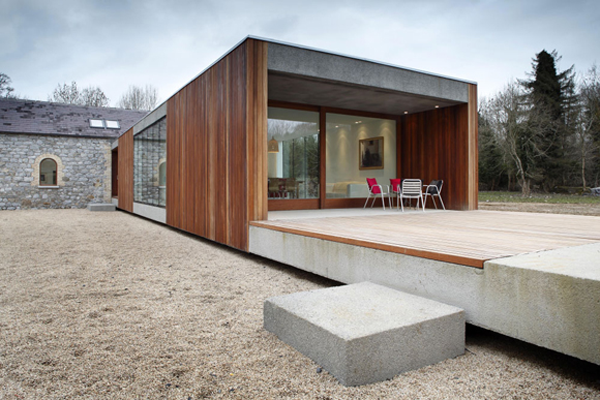
Dublin based ODOS Architects have completed the restoration and extension of The Stables, a 18th Century farmhouse and stable complex in Ballymahon, Longford county, Ireland. This 4,840 square foot self-catering villa is composed of two buildings: the country house known as the Gold House, which includes the addition, and the stables, known as The Other Side. The Gold House was completed in December 2008 and the stables were finished in May 2010.
Each part of the residence is independent and offers a kitchen, a living/dining area, four bedrooms and three bathrooms. The Gold House and The Other Side can be booked all year long: weekly rates vary from $1,350 to $1,750.



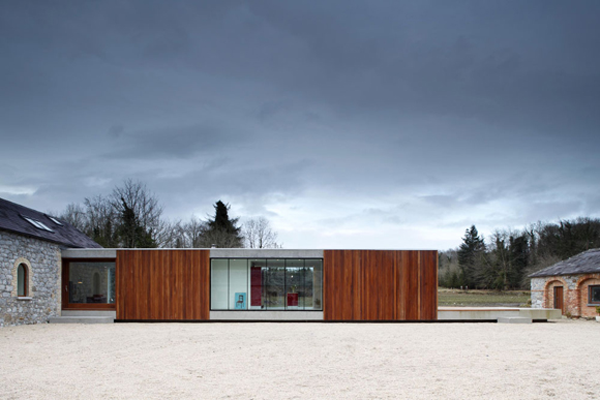
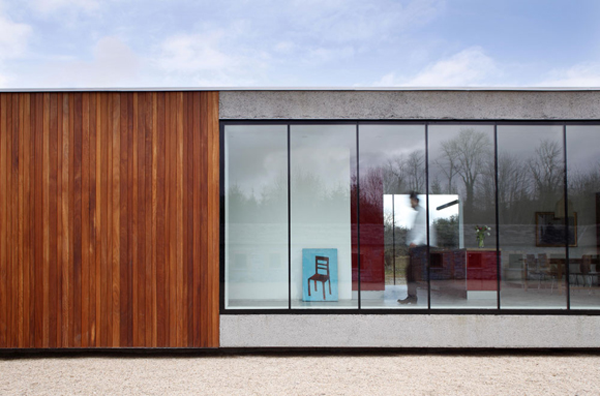
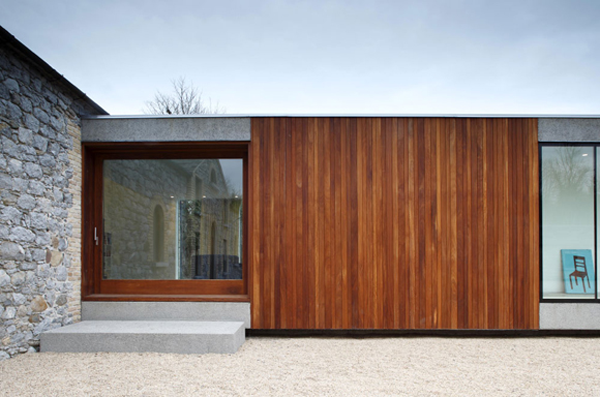
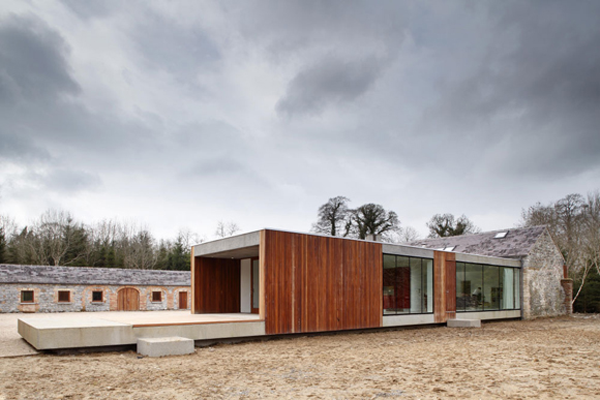
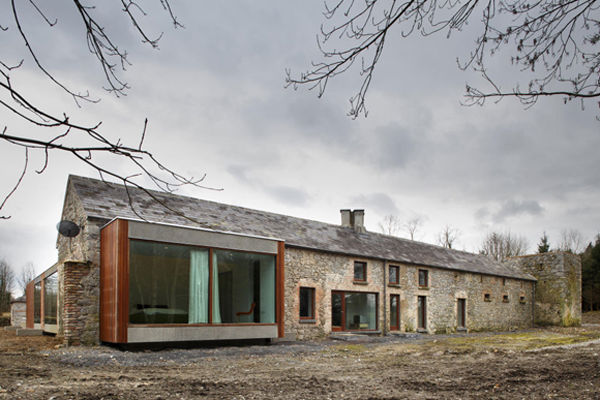
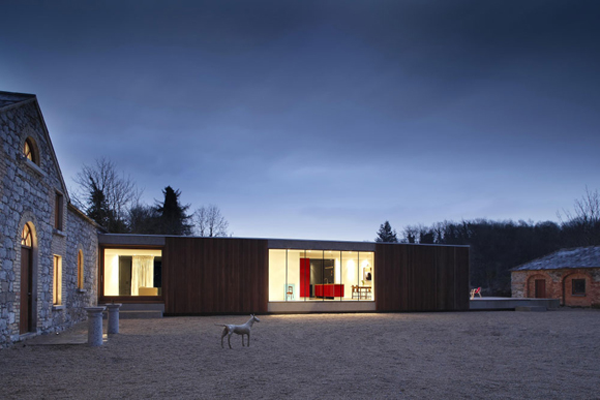

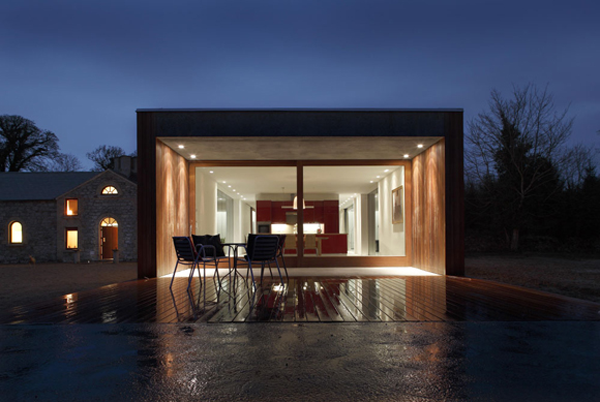


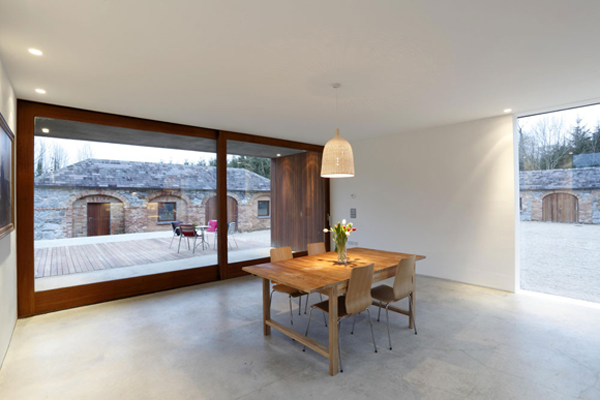
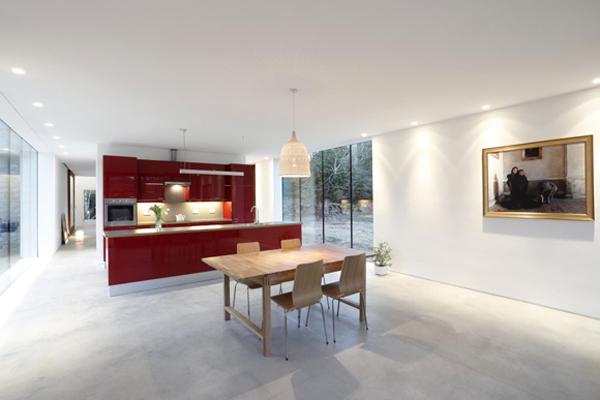
Description of the project from ODOS Architects:
“This collection of 18th Century farm buildings sit central to woodlands outside Ballymahon, Co. Longford. The existing buildings originally formed three sides of a courtyard. An old crumbling stonewall completed this courtyard. A new single storey wing replaces the old wall and provides open plan living kitchen and dining accommodation. To the rear, en-suite master bedroom accommodation has been provided.
The existing buildings have been restored to house varying accommodations, notably bedrooms, bathrooms, studio, garage & plant room. The introduction of this new wing is an attempt to complete the courtyard whilst allowing a visual transparency between the courtyard and the woodlands beyond. This is something, which is lacking in the existing collection of buildings. Large expanses of frameless glazing allow the user to engage with both the courtyard and the surrounding landscape. This is in stark contrast to the experience one feels when in the existing buildings. Their small aperatured interiors provide lowly lit spaces, which suggest secondary accommodation.
Externally, the oiled cedar cladding attempts to connect this new wing to its wooded surroundings whilst offering warmth of material to the inner courtyard, something that is lacking in the existing collection of stone, brick and slate buildings. The use of highly aggregated sand blasted concrete tonally links this new wing to the existing collection of buildings. The new wing has been raised off the ground to give it a float-like quality. This contrasts against the routed character of the existing buildings. This wing has been “skewered” through the existing two storey farmhouse allowing the surrounding landscape to flood into the inner courtyard.
The protruding section to the rear of the farmhouse, houses the master bedroom accommodation and forms an “eye” to the surrounding woodland. The extended raised terrace off the dining area is an attempt to hold an edge to the courtyard. The mobile quality of this new wing, when viewed from the surrounding woodlands, suggests an “inhabited” sliding door has been opened onto the surrounding.”
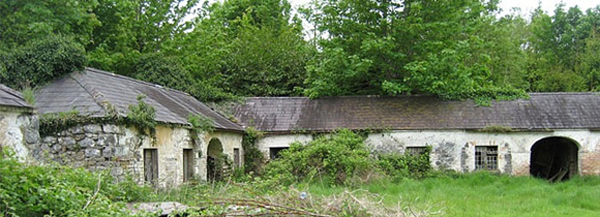
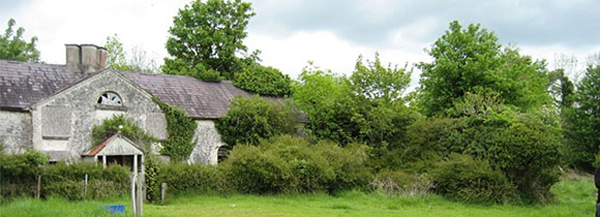

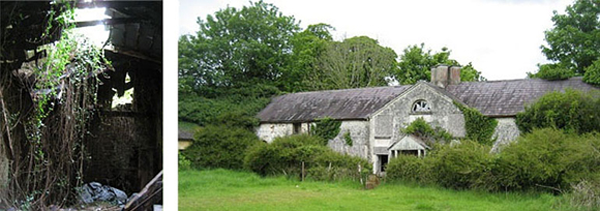

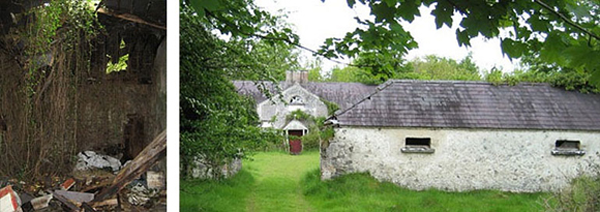



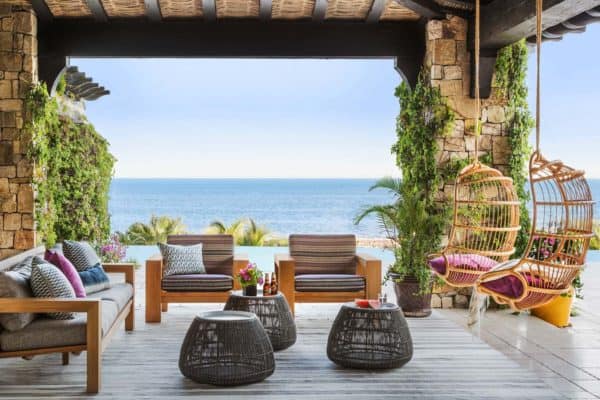



1 comment